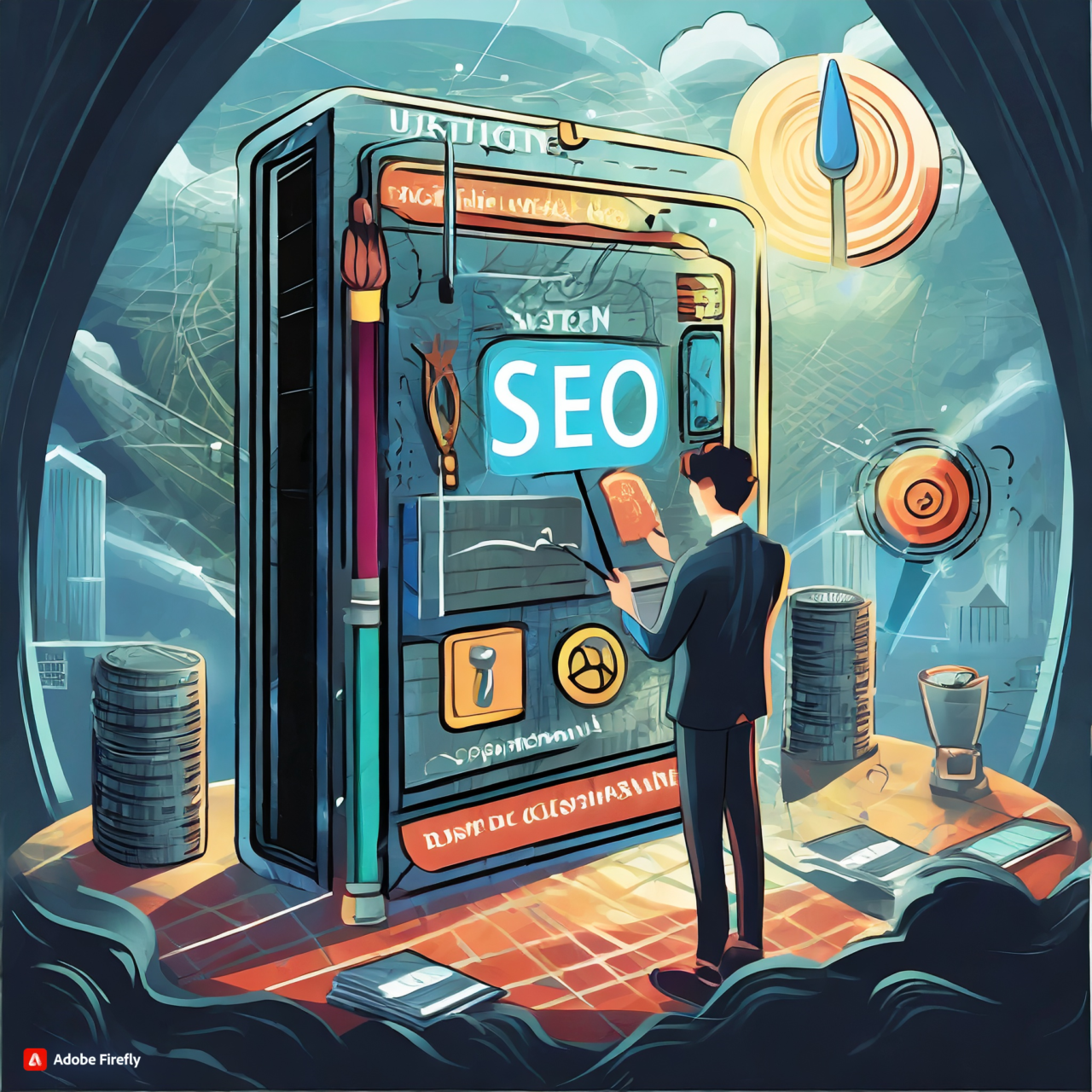The dynamic world of AI SEO tools is a battle between agile startups and established giants. This article examines whether nimble AEO/GEO startups can compete with their seasoned counterparts, exploring industry insights, market shifts, and the potential paths forward in a field dominated by technology-driven innovation.
The Rise of AEO/GEO Startups
The landscape of the SEO industry is undergoing significant transformation, with the emergence of startups focused on Algorithm Expertise Optimization (AEO) and Geographic Expertise Optimization (GEO). These startups are rapidly carving out a niche in the industry by leveraging cutting-edge technology and innovative approaches that respond to the changing dynamics of SEO. Their entrance into the market is stirring the competitive landscape dominated by established SEO tool giants. The agility and creativity that AEO/GEO startups bring to the table are significant. They are adept at identifying gaps in existing services, offering solutions that better address the evolving needs of users and search engines.
These startups have a distinct advantage in their ability to swiftly incorporate artificial intelligence and machine learning into their products and services. Unlike established giants that often struggle with legacy systems, AWS startups are more nimble. They quickly adapt to changes in the industry, such as algorithm updates or shifts in user behavior. Their infrastructure is often built from scratch, prioritizing the latest in SEO and AI innovations. This allows them to deliver highly specialized solutions. These startups also possess the acumen to pivot their strategies effectively, making them resilient in the face of market volatility.
A key to their innovative edge lies in understanding the intricate nuances of search engines beyond traditional metrics. They delve deep into user intent, site quality, and content specificity. This insight allows them to develop tools that enhance search visibility and improve user engagement. Moreover, AEO/GEO startups often leverage cloud technology and scalable infrastructure. This ensures that their solutions are not only efficient but also flexible enough to accommodate the needs of businesses of all sizes.
Despite the advantages, AEO/GEO startups face considerable challenges when it comes to market penetration. One primary hurdle is the lack of brand recognition and customer trust. Established companies have spent years building their reputations. They have significant client bases that are wary of switching to newer, lesser-known entities. Additionally, the marketing budgets of large firms dwarf those of startups, making it difficult for the latter to command attention.
Another significant challenge is the development of comprehensive data sets. Established SEO platforms have extensive data pipelines that new entrants find hard to match. They lack the vast historical data that large companies leverage to refine their algorithms and service offerings. Startups must therefore rely on innovative data collection techniques and partnerships to overcome these limitations.
An area where these startups make noteworthy strides is in addressing unmet needs in the industry. Many focus on niche markets or specific functionalities that larger companies tend to overlook. Some AEO/GEO startups, for example, have concentrated on improving local SEO by providing hyper-local insights and optimization tips that transform search visibility in specific geographic areas. Others have honed in on user experience metrics, such as dwell time and interaction rates, offering tools that deliver a substantial boost to these critical areas.
Success stories of these startups abound, showcasing their capacity to maneuver around challenges with ingenious strategies. For instance, some firms have utilized freemium models, providing powerful baseline tools at no cost to build a user base before introducing premium features. This approach encourages user adoption and builds trust, helping bridge the gap between innovative startups and their skeptical clientele. Another successful strategy involves collaboration with more established entities for mutual benefit. By partnering with renowned digital marketers or tech firms, AEO/GEO startups gain credibility and exposure to larger audiences, while their partners benefit from the specialized expertise that these startups provide.
AEO/GEO startups have also used cutting-edge machine learning algorithms to offer predictive analytics in SEO, providing clients with foresight into potential search trends and consumer behaviors. This forward-thinking approach not only differentiates them from the competition but also positions them as thought leaders in the SEO tech space. Whether it’s through groundbreaking approaches to backlink analysis or advanced solutions for content optimization, these startups continue to push boundaries and set new standards for the industry.
Despite the hurdles they must overcome, AEO/GEO startups are redefining the SEO landscape. Their presence highlights the importance of innovation in a domain often rigidly controlled by a few key players. These startups embody a dynamic spirit that continually challenges the status quo. They have proven that with the right technology, creative vision, and strategic planning, they can compete on almost equal footing with industry giants.
The future of SEO will likely involve a more balanced ecosystem, where both established giants and nimble startups coexist. The impact of AEO/GEO startups is seen clearly in the diversification of tools and services now available to businesses seeking to enhance their digital visibility. They are pressing established companies to innovate continually, driving the whole industry forward.
In a rapidly evolving world where digital strategies reign supreme, staying informed is crucial. Understanding the intricacies of SEO development can provide valuable insights into the shifts occurring within this landscape. For more on the advances pushing technology to its limits, consider exploring the wealth of information available at AI Market Trends. Here, you’ll find insights into the innovative forces driving change and how startups are making a mark in the industry.
As AEO/GEO startups continue to grow, they will undoubtedly contribute a great deal to an ever-advancing SEO industry. With their focus on unmet needs, their rapid adaptability, and their reliance on the latest technology, they stand as prime examples of what entrepreneurship can achieve in the digital age. The competition with well-established SEO giants is fierce, but as these startups continue to thrive, they highlight the transformative power of innovation and the ongoing evolution in the world of search engine optimization.
Strengths of Established SEO Platforms
Established SEO platforms wield substantial influence in the digital marketing sphere, setting the benchmark for others to follow. Their **extensive experience** forms the cornerstone of their continued success. Having been in the market for years, these platforms possess a deep understanding of search engine algorithms and evolving SEO strategies. This experience translates into an ability to anticipate changes, an asset often elusive to emerging startups struggling to get a foothold.
The **availability of high resources** propels established entities forward. With significant financial backing, these platforms invest heavily in research and development. They have the means to recruit top-tier talent and foster environments conducive to innovation. Large teams are often dedicated to mastering various aspects of SEO, from keyword research to on-page optimization. This enables them to develop comprehensive tools that address multiple facets of digital marketing, setting them apart from smaller competitors offering niche solutions.
Robust **data pipelines** further augment their market position. Years of data accumulation provide these platforms with unparalleled insights into search engine behavior and user interaction. Vast data reserves allow for accurate trend forecasts and improved algorithm predictions. This not only bolsters their credibility but also enhances customer trust. Users gravitate towards solutions offering reliable analyses and recommendations based on extensive datasets.
These competitive edges culminate in a dominant market stance. The integration of experience, resources, and data results in powerful ecosystems that continually weed out inefficiencies. Established platforms leverage their clout to forge strategic alliances, further entrenching their influence. Continual updates and expansions on existing frameworks keep them relevant amid rapid technological advancements. This adaptability is crucial as digital landscapes evolve, ensuring their tools remain indispensable to marketers.
However, maintaining such expansive systems invites its own set of hurdles. **Tech debt** looms as a significant challenge. Over the years, additions and updates to the platforms create complex layers of code. This surplus becomes cumbersome to manage, leading to inefficiencies and slower response times when addressing technical issues. For platforms accustomed to streamlined operation, tech debt is a potential stumbling block.
Moreover, **adapting to AI innovations** presents a daunting task. Artificial intelligence and machine learning are reshaping SEO landscapes, demanding innovative adjustments. While established platforms possess resources for integration, their size often slows down adaptive processes. Smaller, agile startups can integrate AI advancements into their frameworks rapidly, offering potentially more efficient solutions. This agility gives startups a certain edge, starkly contrasting the often slower maneuverability of established giants facing bureaucratic layers.
Amid these challenges, established platforms remain resolute. Their ability to adapt through **incremental innovations** is noteworthy. Rather than wholesale overhauls, they focus on gradual improvements, a strategy allowing them to incorporate new AI technologies seamlessly over time. This approach ensures minimal disruption to existing services while embracing necessary innovations. The strategic use of AI helps refine existing features, allowing established players to maintain their competitive edge.
Further supporting their market dominance is the **trust** they have built among users over time. Longevity breeds reliability. A track record of delivering effective solutions solidifies their reputation. They become go-to choices for businesses wary of the risks associated with unproven startups. The combination of brand recognition and user trust makes established platforms formidable in client retention, further solidifying their market position.
Yet, it’s essential to recognize potential **future risks**; this includes the pace of AI progression and user demands evolving faster than anticipated. Despite their current strengths, established platforms must remain vigilant. Should network effects diminish, newer entrants with innovative offerings could leverage market shifts. Established platforms must stay ahead by offering advanced features and adapting quickly to evolving demands.
Overall, the advantageous position of established SEO tools stems from a trifecta of experience, resources, and data competency. These strengths secure their dominance yet simultaneously present hurdles in terms of agility and technological debt, especially with AI dramatically altering current paradigms. Navigating these challenges while leveraging inherent strengths will be pivotal as they assess whether **coexistence or outright dominance** becomes the narrative of the future SEO landscape. As these giants continue to evolve, understanding the complexities of **how 5G technology enhances the Internet of Things (IoT)** may be one arena in which they endeavor to innovate, further expanding their operational capabilities.
A Future of Coexistence or Dominance
As AI continues reshaping the SEO landscape, the tool market may witness profound changes. This transformation could see AEO/GEO startups and established giants adjusting their positions in the ecosystem. The future holds many possibilities: will there be coexistence, or could one group dominate the other?
Startups bring fresh energy and innovative approaches. They’re nimble and adapt quickly to market needs, often finding unique niches that established companies overlook. With AI at the core of their strategies, startups can offer more personalized, efficient solutions. This agility allows them to experiment and refine their products at a fast pace, often filling gaps that larger companies can’t address due to bureaucratic or legacy constraints.
On the other hand, established giants leverage massive datasets and experience. Although they might be slower to innovate, their comprehensive resources and vast expertise offer reliability and depth. These platforms have robust infrastructures that handle complex SEO tasks with precision, making them indispensable to their users.
For startups, securing venture capital plays a crucial role. It’s not just about financial backing; it’s the strategic mentorship and network connections that help propel a startup from concept to reality. Venture capitalists recognize the potential of AI-driven solutions and are eager to invest in startups offering revolutionary tools. Yet, the influx of capital can drive market saturation, pressing startups to innovate continually and differentiate their offerings further.
The dynamic between giants and startups is also influenced by changing user behavior. Users today demand intelligence, adaptability, and real-time insights. They expect tools to evolve with their strategies, not just offer historical analysis. This shift gives startups an upper hand—they can mold their products to fit emerging trends, sometimes better than larger companies entrenched in older technologies.
Yet, the dominance of giant platforms cannot be underestimated. They possess the ability to integrate AI advancements seamlessly into existing frameworks. Some have even started acquiring startups or forming strategic partnerships, merging innovation with established reliability. This hybrid approach could lead to more comprehensive solutions, making it harder for standalone startups to compete.
Critically, market saturation presents both a challenge and an opportunity. A highly saturated market could stifle growth for new entrants, making it necessary for them to offer something profoundly different or superior. However, saturation also means a heightened demand for niche solutions, which startups can capitalize on by focusing on specific industry needs or regions that larger platforms might ignore.
The path ahead could see an ecosystem where coexistence rather than dominance is the norm. Giants will likely maintain their hold due to their vast resources and established credibility. However, startups will thrive by carving out specialized niches, focusing on particular aspects of SEO that complement rather than directly compete with the offerings of larger firms.
User-centric design, coupled with constant innovation, could be the cornerstone for startup success. Acknowledging the evolving needs of users, longstanding platforms might also adjust their strategies to ensure they retain market share. AI will be a boundary line where new players and incumbents either clash or collaborate. Innovations in AI could reshape SEO from purely search-focused optimization to broader digital experience enhancement, where every digital touchpoint becomes a potential avenue for growth.
Both startups and giants face unique risks and opportunities. Startups must navigate the challenges of scaling and sustaining growth while maintaining their innovative edge. Established platforms must overcome their tech debt and internal inertia to incorporate cutting-edge AI advancements swiftly.
There is potential for collaboration between startups and giants, leading to synergies that benefit both parties. Startups can leverage the reach and infrastructure of giants, while incumbents can tap into the innovation and agility of startups. Partnerships like this could redefine market boundaries, ensuring a productive coexistence that advances the SEO tool market as a whole.
Ultimately, the future of the SEO tool market hinges on adaptability. Players that continually evolve their offerings to meet changing demands are more likely to achieve long-lasting success. Whether this evolution occurs through competition, collaboration, or a combination of both remains to be seen, but the constant factor will be innovation driven by AI.
In considering this market transformation, it’s essential to recognize the role of platforms in reshaping digital marketing landscapes. Understanding these trends can aid businesses in making informed decisions and adapting quickly. The evolution of SEO tools is not just a competition—it’s an ongoing adaptation to both technological developments and changing user needs. This dynamic interplay ensures that the market won’t just survive but thrive as AI enhances its capabilities.
For additional insights into how AI and technology are influencing SEO, you can explore this comprehensive guide to SEO mastery. This resource dives deeper into the techniques that both startups and established platforms can employ to stay ahead in this rapidly evolving field.
Final words
The landscape of AI SEO tools is complex, with both startups and giants facing unique challenges. While established companies have resources and experience, startups offer innovation and agility. The future hinges on adaptability and understanding evolving user needs, signaling that both can potentially thrive if they tailor their strategies effectively.




